Ruckus tears up Turbo. Photo by Jay Futronic.
Article originally published September 24, 2012 by The Grid online (thegridto.com).
360 Adelaide St. W. has had many incarnations over its 90-year-plus existence, but it is best remembered as the home of Toronto’s burgeoning drum ‘n’ bass scene in the early 2000s.
BY: DENISE BENSON
Club: Turbo Niteclub, 360 Adelaide W.
Years in operation: 2000-2003
History: Built around 1920, the six-storey red brick office building at 360 Adelaide St. W. has been home to multiple dance clubs, many of them owned and operated by Vincent Donohoe. He’d opened Top 40 venue Denile at the address in 1997, a time when the Entertainment District was synonymous with nightclubs, but Donohoe was no newbie. He’d already helped finance Charles Khabouth’s first two clubs in the 1980s—Club Z at 11A St. Joseph and Stilife on Richmond—and run other businesses.
“Although Charles Khabouth never seems to want to let people know, I was a full partner in Club Z and the money behind Stilife,” writes Donohoe in an email. “He was broke when I met him, and at one time I owned two thirds of Club Z. I also helped put together Orchid Nightclub [on Richmond Street], and was general manager for their first three years, until I built Denile.”
Donohoe’s one-floor Denile later morphed into Jet Nightclub, a hybrid venue that held successful commercial nights, and was regularly rented out by rave production companies like Ritual, Empire, and Lifeforce Industries for much more underground, after-hours events.
By 1999, Lifeforce—Toronto’s largest rave production company and the umbrella organization behind the Dose, Syrous, and Renegades brands—was under intense scrutiny as the City, police, and media cracked down on late-night parties. Toronto’s once enormous rave scene was dwindling, the crowds maturing, and events had moved increasingly to licensed nightclubs like Industry.
The young entrepreneurs behind Lifeforce—Rob Lisi, brothers Steve and Wayne Mealing (a.k.a. DJs Stretch & Hooker), Tyler Cho, and Aaron Micks—recognized it was time to flip the script.
“The motivation for opening our own club was mostly driven by the political pressure from the city, and increased costs at the raves,” explains Lisi. “At that time, there was a lot of negative attention on the rave scene, and finding a new home to place all the DJs we were booking was the number-one priority. Lifeforce was the biggest target for city officials and it just wasn’t feasible at that time to run the larger parties. Venue-capacity numbers were being reduced, paid-duty officer requirements were going up, and other costs were going through the roof. Moving into the clubs was the logical next step.”
“We were not actively looking to lease a property or build a club from the ground up because we were so busy,” adds Wayne Mealing a.k.a. DJ Hooker. “However, Lifeforce did an event at Jet in summer of 1999 that was the busiest night they had ever had. When Rob and I went to settle the event the next week, the owners approached us with the idea of partnering up, and us eventually buying them out to take over the lease.”
“For us, it was the right place at the right time, especially at a time when Industry, still my favourite club, was closing,” says Lisi.
Donohoe gives due credit: “Lifeforce showed a new way of entertaining that I had missed with Jet and Denile; they showed me how the late-night scene was so alive.”
A deal was struck that split the business three ways between Donohoe, his silent partner, and the men of Lifeforce, with the two original owners maintaining responsibility for day-to-day operations and the late-night lads taking on programming, promotion, and the sound and lighting design.
In very little time, Jet was renovated into a much larger, darker concrete whole. The ground floor became a huge rectangular room with multiple bars, a raised VIP area, decent décor, and a massive DJ booth at the back. The sizable basement had less frills and little lighting. Legal capacity doubled from 900 to 1,800 people, making it by far one of the largest clubs in the area. Most significantly, the Lifeforce crew had a state-of-the-art Turbosound system installed.
Turbo Niteclub opened in April of 2000.
Why it was important: “I think what made the space work as Turbo was the excellent promoting and booking talents of the Lifeforce crew on Fridays,” says Alex Dordevic, publisher of the defunct but influential TRIBE magazine and its still very active message boards.
“These guys cut their teeth throwing some of the earliest rave events in the city, and consistently threw the largest raves in Toronto, culminating with that massive Freakin’ event at Polson Street that set the record for the largest rave ever thrown here,” Dordevic says. “They had a great following, and a lot of friends and music connections because of the rave promoting, as well as a great love of the music. Turbo was their first experiment into transitioning from throwing one-off rave events to doing a large regular nightclub.”
“The timing of Turbo was perfect,” says Steve Mealing, a.k.a. DJ Stretch. “Our goal was to provide a top-quality sound system and an underground feel on a weekly basis. The talent pool and availability was outgrowing how many events we could do with the standard or quality we were producing. Turbo was a place to cultivate local talent, and showcase the arts where it fit in. The quality of talent in Toronto at the time made it that much easier to do.”
But first there was the matter of moving a great number of locals—and their followers—over from the nearby System Soundbar. System had opened a year earlier, and was already attracting huge post-raver crowds, largely thanks to the Lifeforce crew’s popular Friday night and FungleJunk Tuesdays there. As documented in a Then & Now story about System, Lifeforce brought both nights and System’s Saturday night crew of promoter Craig Pettigrew and DJs John E and Myka over to Turbo.
“Although we were really happy at System Soundbar, the thought of having input into all aspects of a club’s identity, music policy, sound, feel, layout, and staff was too much for us not to do it,” explains Wayne Mealing.
The Turbo Fridays concept was to feature the Dose take on house, techno, and underground party music upstairs—with resident DJs Stretch & Hooker and Tim Patrick—and the drum ‘n’ bass and jungle associated with Syrous/Renegades and the Vinyl Syndicate DJ crew downstairs. Fridays launched on April 15, 2000, with guests Donald Glaude and DJ Zinc.
DJ Sneak guested the next night at the launch of Drul Saturdays, playing alongside residents Myka and John E. Competing for the same crowds as System and The Guvernment, Drul never fully gained traction. Promoters Jennstar and Gairy Brown—long associated with Industry Niteclub—were hired in September of 2000 to launch Giant Saturdays, aimed at a more mature house crowd. Residents Myka and Carlos Fuerte played alongside international guests including John Acquaviva, DJ Dove, and Satoshi Tomiie.
Lifeforce Fridays proved to be immediately popular, however.
“The main room was rammed with a lively and very engaged crowd every week, so the vibe was incredible,” says Tim Patrick, who had also played at System, Industry, and large raves, and had toured regularly across North America by the time he played Turbo. “Every Friday was epic.”
“Fridays attracted an interesting mix of house and techno heads with a splash of artsy professionals,” recalls Steve Mealing. “There was no attitude, no music snobs—just people open to new sounds and the staple classics. Without a doubt, the party people who supported Turbo from day one directly reflected how educated the Toronto scene really was at that time. Everyone came for the people and the music, not to peacock around.”
Upstairs on Fridays, touring artists like Misstress Barbra, Barry Weaver, Terry Mullan, Dave Clarke, and Bad Boy Bill could be found in the booth. Britain’s Carl Cox notoriously melted the crowd on Turbo’s first anniversary.
Steve Mealing recalls some other favourite Friday nights: “Darren Emerson from Underworld destroyed the place one night; it was rammed to the entrance, and the crowd was beyond up for it. There was also the night that DJ Dan’s records were lost by the airline. The club was thick with energy so he offered to play our records, and played back-to-back with us for six hours. Amazing.”
“I loved playing at Turbo,” says brother Wayne. “I feel like Stretch & Hooker grew up as DJs at System, and crafted the art at Turbo.”
Tim Patrick—who later moved to Croatia, now resides in Prague, and tours Europe constantly—feels the same.
“It was an incredible opportunity for me to really get to work on such a powerful set-up that was created with the DJ in mind. I was able to open for some very big guests and, on some nights, play nice, long extended sets. I was granted the ability to develop my sound at Turbo, on my terms, and I am incredibly thankful for that.”
More than anything though, Turbo is remembered as a key hub for Toronto’s drum ‘n’ bass scene—at that time, one of the largest in the world.
“Although the d’n’b room was smaller, with lesser sound and had its quirks, some of the best parties at Turbo were downstairs,” offers Wayne Mealing.
“Turbo was the first time we had major club to call home for d’n’b,” says Brad Leonard a.k.a. DJ Lush, a former resident at Turbo’s Syrous Sessions Fridays, FungleJunk Tuesdays, and also heard at all the big parties of the time.
“In the hardcore days, we had 23 Hop; in the jungle days, we had the Tunnel, and then after that ended it was five years till we, as a scene, landed in Turbo. You have to remember the drum ‘n’ bass scene had always just been on its own. We never got the press, and we were always relegated to ‘second rooms.’
“Turbo was a chance to independently do our own thing and the d’n’b scene at that time was just thriving—there were so many people into the music. The crowd was so knowledgeable; they really responded to new tunes and good mixing. Many tunes that went on to be these genre-defining classic anthems, we played or heard there first.”
“The basement at Turbo on Fridays was a testing ground for all the new tunes and dubs,” agrees Pat Brodeur a.k.a. Mystical Influence, one of the most ubiquitous Toronto drum ‘n’ bass DJ/producers of all time. “If it worked in that room on Friday, you could pretty much guarantee that you would hear it everywhere for the next month.”
Video by Sensory Transduction. Features Mystical Influence and Sniper at FungleJunk, May 2000 and more.
Brodeur—who also headed up the d’n’b section at influential record shop Eastern Bloc and ran both Vinyl Syndicate Recordings and Fully Loaded Distribution, among other projects, with his brother Chris, a.k.a. DJ Sniper—was heavily involved in the bookings for both the Syrous Sessions and the all-ages FungleJunk Tuesdays.
Mystical, Sniper, and Marcus Visionary were key residents at both nights, rotating with Lush, Unknown Souljah, Everfresh, Prime, Slip & Slide, Dominik, and Illfingas, and MCs including L Natural, Caddy Cad, and JD. But the talent didn’t stop there.
“We tried to get everyone in to play, including guys who had never played anywhere,” says Brodeur. He booked early appearances by locals including Ruckus, Capital J, Spinz, Gremlinz, and Mr. Brown. “If you brought your demo tape to E-Bloc and I thought it was decent, you got a slot.”
“Basically anybody who hung around Eastern Bloc long enough would get a chance to play,” confirms Leonard. “If Turbo was the party hub of the d’n’b scene, Eastern Bloc was where you rubbed shoulders with the DJs and got to know who the serious guys were. It was the essential meeting place at that time.”
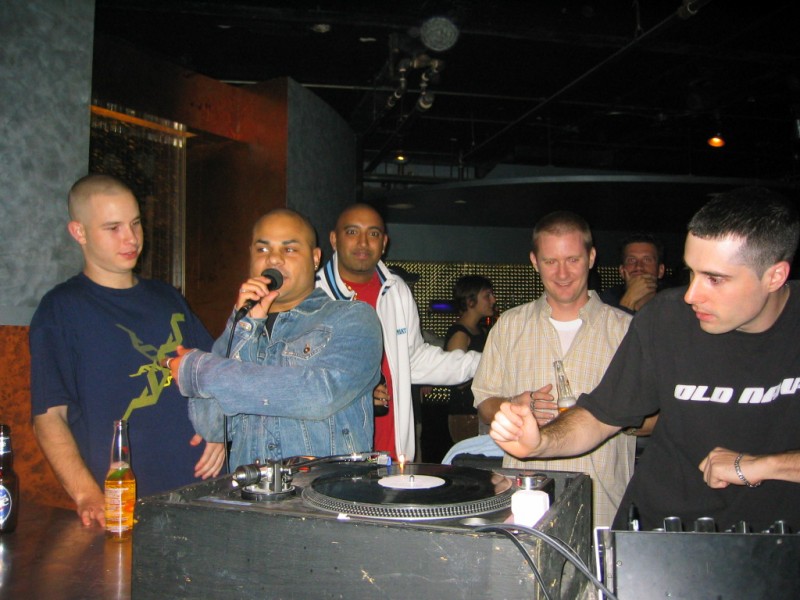
Resident junglists Tragedy, Marcus Visionary, JD, Mystical Influence, Prime, and Lush. Photo courtesy of Lush.
Both Syrous Sessions and FungleJunk featured a steady stream of top international guests as well, including DJ Hype, Zinc, DJ Rap, Aphrodite, Randall, Dieselboy, MC Dynamite, and Andy C.
“Andy C had some unbelievable sets in there over its time,” enthuses Leonard. “He owned that place, and would leave people in awe. All the major players came through there at one point or another.”
Andy C’s set recorded live at Turbo in September of 2001 can be downloaded at the Toronto Rave Mixtape Archive website (in two parts), where live Turbo sets from the likes of Bad Company, Marcus Intalex, and Mickey Finn can also be found.
“We were spoiled at that time,” agrees Marcus Sills a.k.a. DJ/producer Marcus Visionary, a Turbo resident, rave mainstay, and prominent Toronto talent who produces and tours the globe to this day. “The d’n’b nights had crowds who were very serious about the music. It was a really amazing time to be playing in the city.
“Turbo also gave us a place to develop. Many DJs learned to become better in that basement. I most definitely learned a lot about controlling a rig, and a crowd, from playing there. There was no hiding your skills when playing on that rig.”
The sound in Turbo’s basement was notoriously loud, and could be painful if DJs didn’t know how to balance the system’s high and low ends. Still, the drum ‘n’ bass crowds were often Turbo’s bread and butter as System Soundbar began to compete again for house and tech fans.
In August of 2001, Lifeforce Fridays came to an end, and the men of Lifeforce Industries pulled out as partners. The Renegades/Syrous Sessions wrapped three months later.
“Lifeforce had the largest raves, and some of the biggest talent; however, that model didn’t translate to a club setting easily,” says Brodeur, now based in Denver where he’s long held multiple DJ residencies.
“The big DJ wages didn’t get smaller in a smaller venue, so you were paying the same [to attract] less people. Add in the guest list—everybody was friends—ladies free, all the free drinks, and so on, and all of a sudden it’s a lot harder to make money.”
Rob Lisi, now based in Switzerland, further elaborates: “Why did we leave? I think we all have different reasons, but the easy answer is that we were losing money. At that time, Toronto wasn’t ready for three or four after-hours clubs, and we didn’t have the deepest pockets. There was also some pressure at that time from our partners to change the format on Saturdays back to R&B and mainstream, and we just didn’t want any part of it. We had to walk away from our investment, but we also walked away from all the headaches that ensued.”
The Lifeforce crew went on to different projects. Lisi helmed Benson & Hedges’ Goldclub sponsorship series, taking artists like Danny Tenaglia, Deep Dish, Tiesto, Paul Oakenfold, and Richie Hawtin to clubs across Canada. The brothers Mealing—later joined by Cho and Micks—began to develop a large-scale tour project, dubbed Mekka, that never came to fruition. That September, Stretch & Hooker also launched Communicate Fridays with co-residents Tim Patrick and Myka at Element Bar.
Vincent Donohoe continued to operate Turbo, and brought in promoters including Charles Lewis and Jesse Brown.
Who else played there: The Turbo story, of course, extends beyond the weekend nights and FungleJunk Tuesdays. If you were going out to parties at the time, you’d also find street teams flyering the city for events at Turbo featuring prominent touring DJs including Jeff Mills, Roger S, and Richie Hawtin, who performed at Blu’s fifth anniversary in November 2001.
“That was one of the most memorable one-off events for me,” says Wayne Mealing. “I remember talking to the doormen at System Soundbar that night and they could clearly hear Richie’s set from Turbo at their front door. That was the clearest and loudest the sound system ever was; Richie tuned it himself, and clearly knew how to optimize the system for his sound.”
A year earlier, Alex Dordevic marked the seventh anniversary of TRIBE magazine with a party at Turbo that featured a live performance by Laurent Garnier and band. People lined up for blocks—all the way west to Spadina—and later wrote rave reviews.
Local talents like Josh Obront, a.k.a. DJ/producer Jelo, worked overtime to land guest gigs at Turbo. Obront, who also worked at the Eastern Bloc record shop, was notorious for his popular series of mixtapes, and he put special effort into creating a high-BPM blend for the Turbo set. (Download Side A here and Side B here).
“I worked my ass off on that thing,” recalls Obront. “The tape was successful as hell, but still I wasn’t offered more shows than the dozen or so I did play.”
Obront was especially a fan of Turbo’s large, concrete DJ booth—“the concrete allowed me to dance my ass off while playing vinyl and not induce one skip”—and its other extremes. “At Turbo, there was never enough seating or places to get away from the music for a moment. You were either in or you were out—like, ‘Take this music and swallow it, stand up, dance, drink.’ That’s it.”
Jelo played at the club while the Lifeforce crew was involved and after they’d left. The junglists also maintained ties to the club, with Friday nights featuring drum ‘n’ bass upstairs and breaks downstairs for a stretch. Lots of d’n’b promoters continued to hold special events at Turbo, including Marcus Visionary, who hosted a number of Junglist Movement parties there.
“One of my standout memories was having a sold-out Junglist Movement event with Shy FX DJing upstairs,” Marcus recounts. “This was the first time I met him, and we became good friends. Eventually, I was signed to his Digital Soundboy record label.”
As for Turbo’s Saturday nights post-Lifeforce, Jennstar’s Giant ended and the night was generally rented out to promoters of mainstream events. A shooting at the club in October of 2002 did not help the club’s increasingly shaky reputation, but did result in the addition of metal detectors and a lawsuit against the police by a frustrated Donohoe.
“As we found out later, this was part of an undercover operation by the Toronto Police looking into individuals who had robbed a gun store a month earlier, and had killed the owner,” Donohoe explains. “They knew that this individual was coming to Turbo that night, but did not try to stop him as they were looking for more clues on the previous crime. He was wire-tapped, and I even have the transcript to this day. I sued, but got nowhere and dropped the case in 2007 after I had retired.” (Further details are documented in a Toronto Star story archived here.)
What happened to it: “When Lifeforce moved on, it seems that the electronic era had taken a turn to smaller venues,” says Donohoe. “I tried to still do the big events, but [the audience] was not there. Also, I did not have the marketing skills of Lifeforce around me. I give those boys a lot of credit for our success.”
Donohoe certainly did give it a go, though. In late 2002, he rebranded Turbo’s lower level as Klinik, and booked in a range of underground hip-hop, breaks, drum ‘n’ bass, house, and techno events. Turbo upstairs also became a rental club.
Early in 2003, Donohoe renovated and re-opened 360 Adelaide St. W. as another underground dance=music venue: Sound Emporium upstairs, with Klinik below. Both floors were special event–driven. Patrons entered by walking down an alleyway and into a back door that led to the lower level.
The address took on yet another identity late in 2005, when Donohoe partnered with the people formerly involved in Spadina street after-hours club Boa Redux. A small number of events were produced on Adelaide under the Boa banner.
“I think a lot of the problem was that it had too many reincarnations,” summarizes Alex Dordevic. “You can only rebrand an address so many times, I reckon. Even the best promoters and DJs still have to battle against the previous karma to make it work.”
Donohoe closed Sound Emporium/Boa Redux early in 2006, and retired from the club business.
360 Adelaide St. W. now blends into its environment. The building sits surrounded by office buildings, condos and condo towers in the making.
Thank you to Alex Dordevic, Brad Leonard, Josh Obront, Marcus Sills, Pat Brodeur, Rob Lisi, Steve Mealing, Tim Patrick, Vincent Donohoe, and Wayne Mealing for participating, as well as to Jay Futronic, Jennstar, Ryan Smith, and TorontoRaveMixtapeArchive.com.

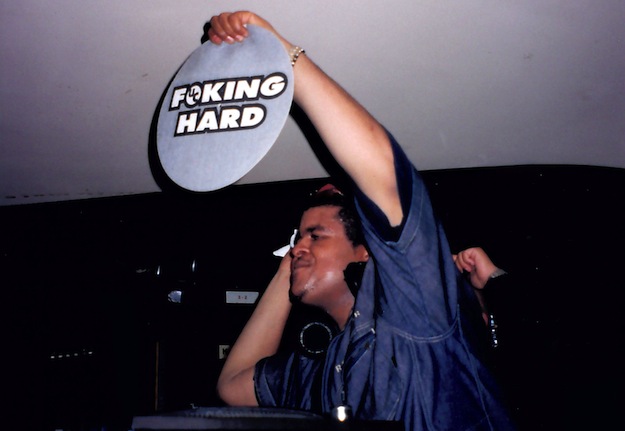
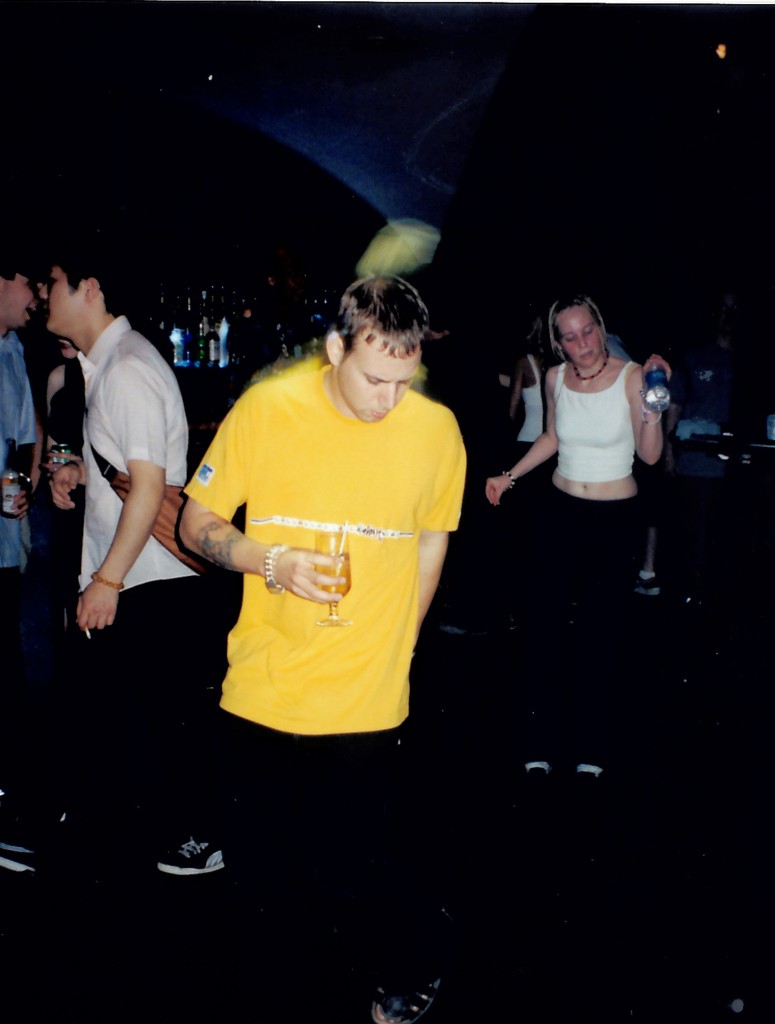

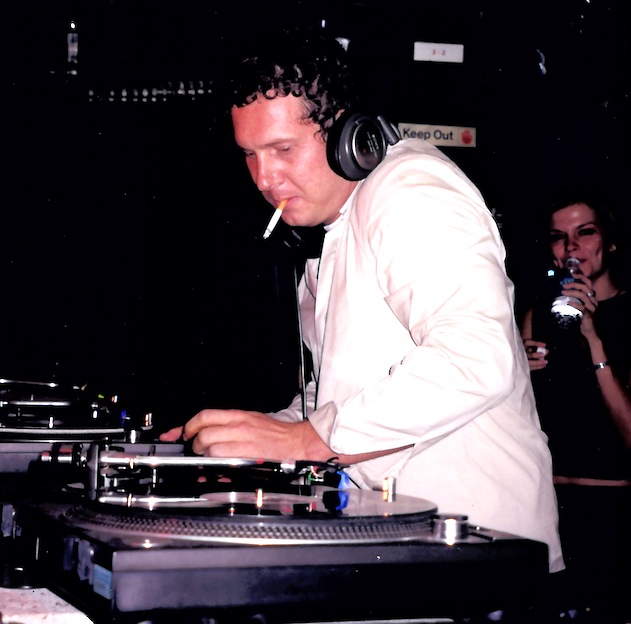
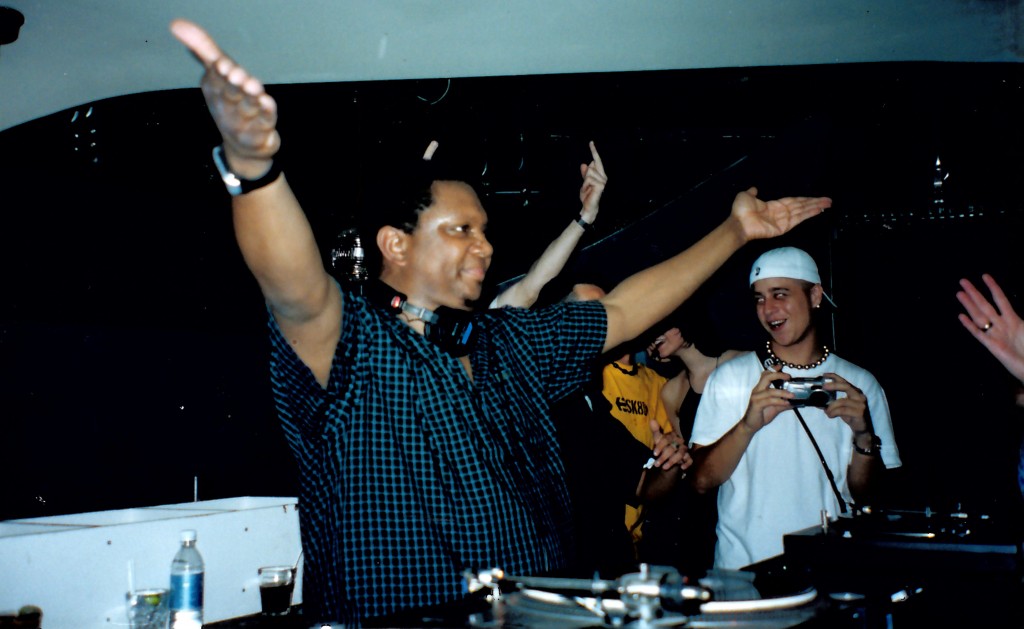
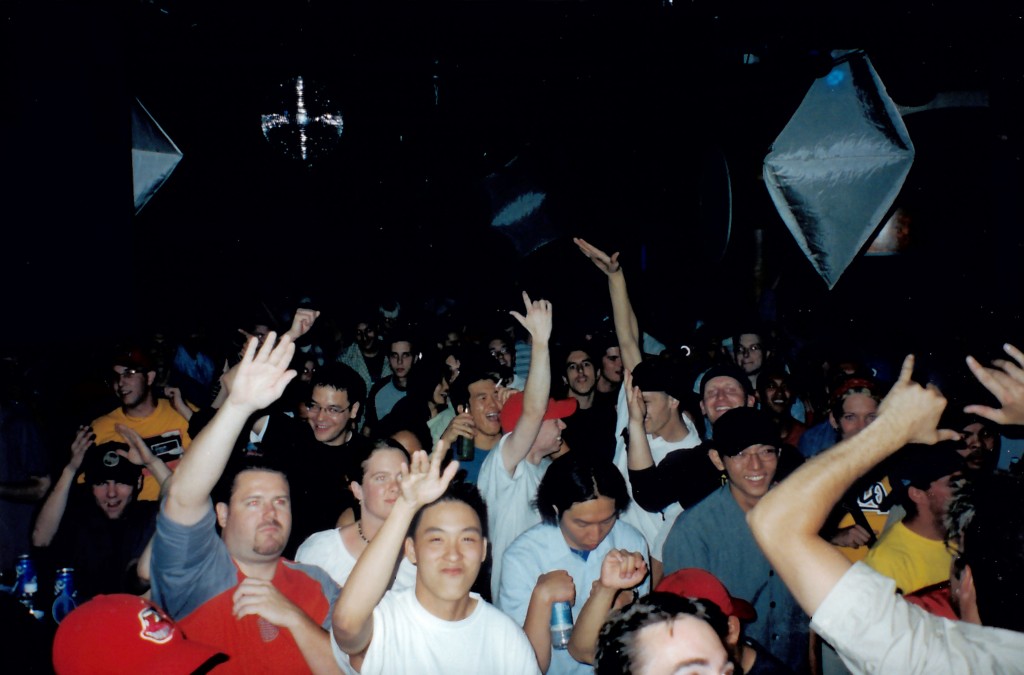
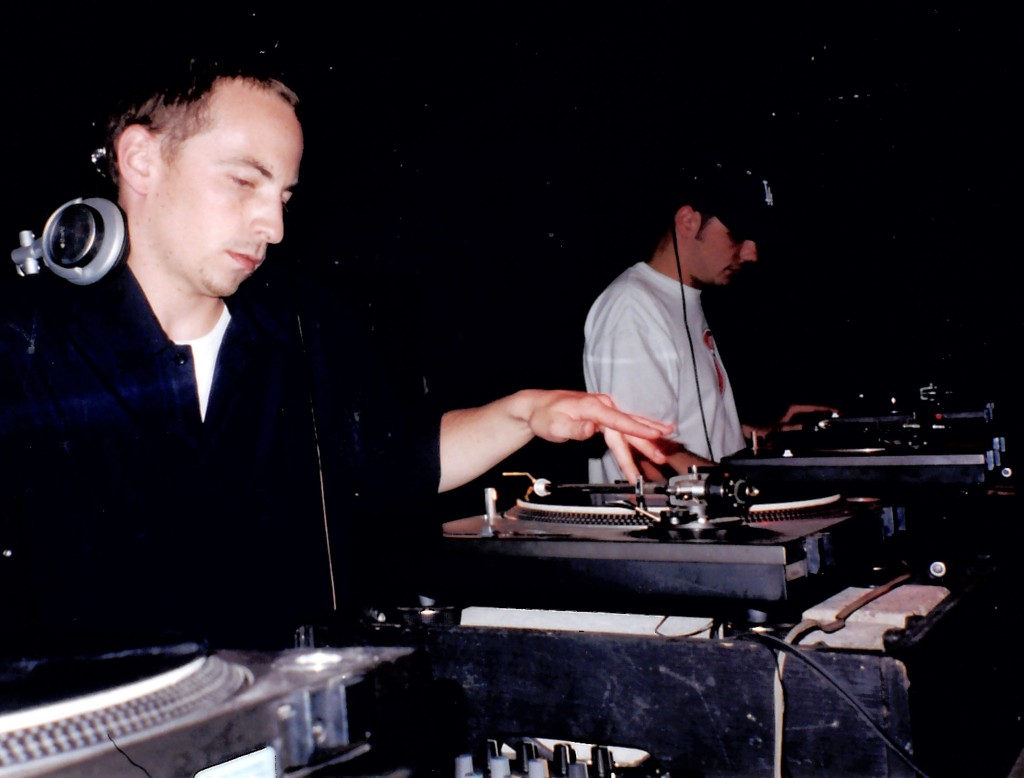
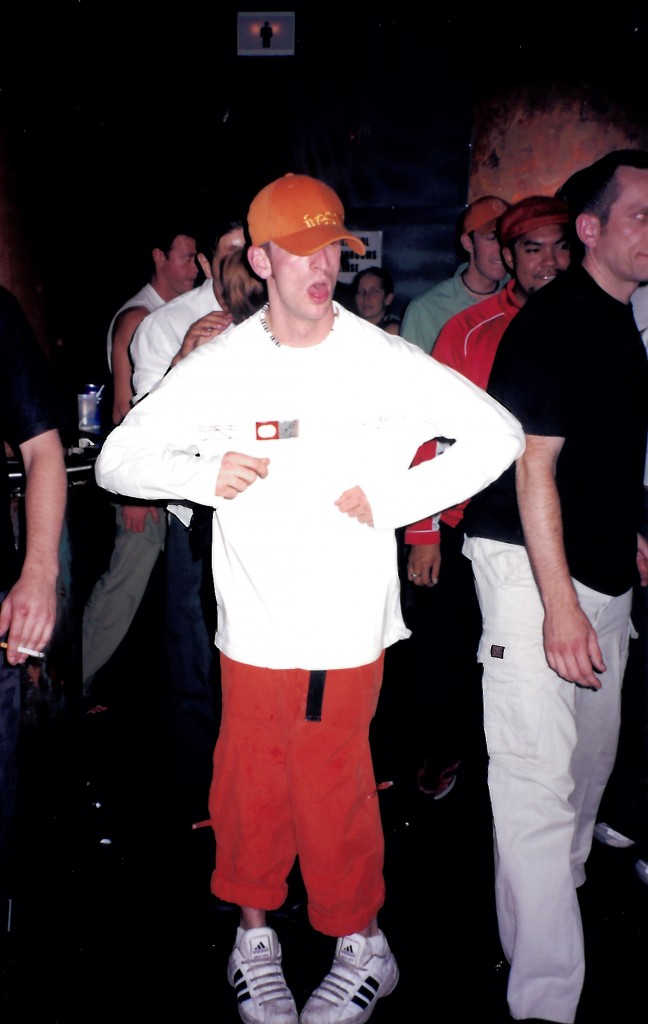
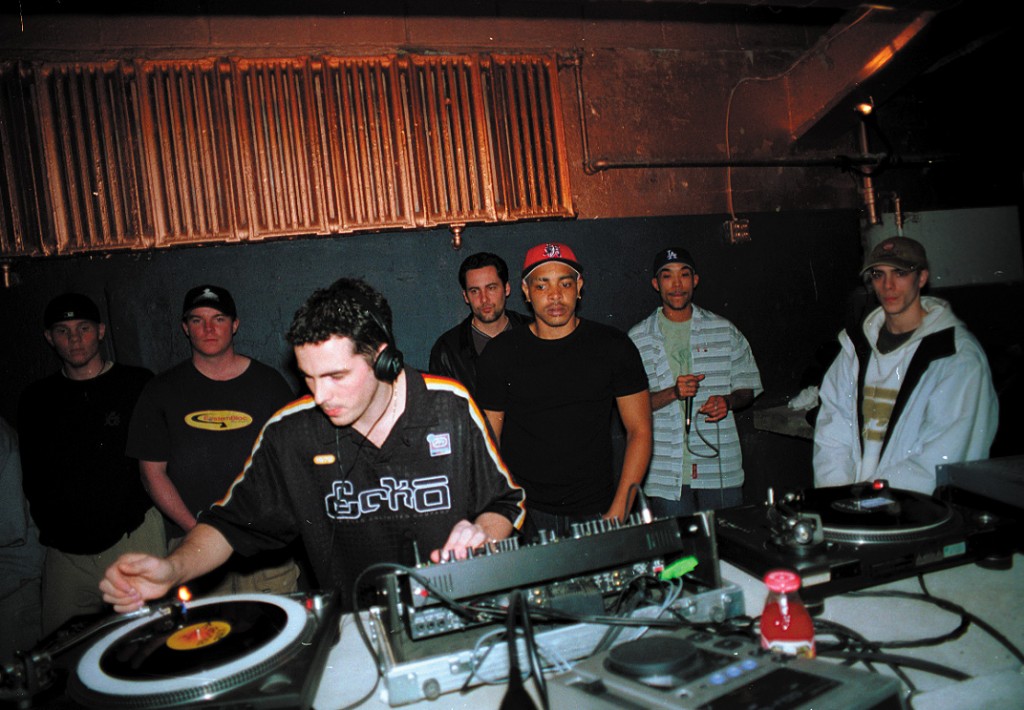
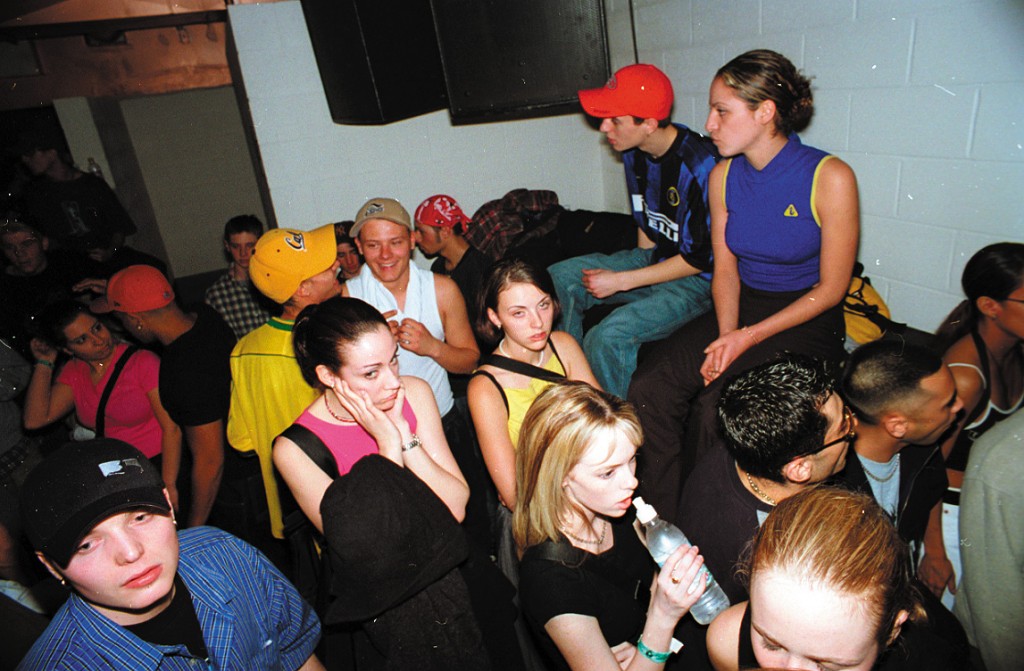
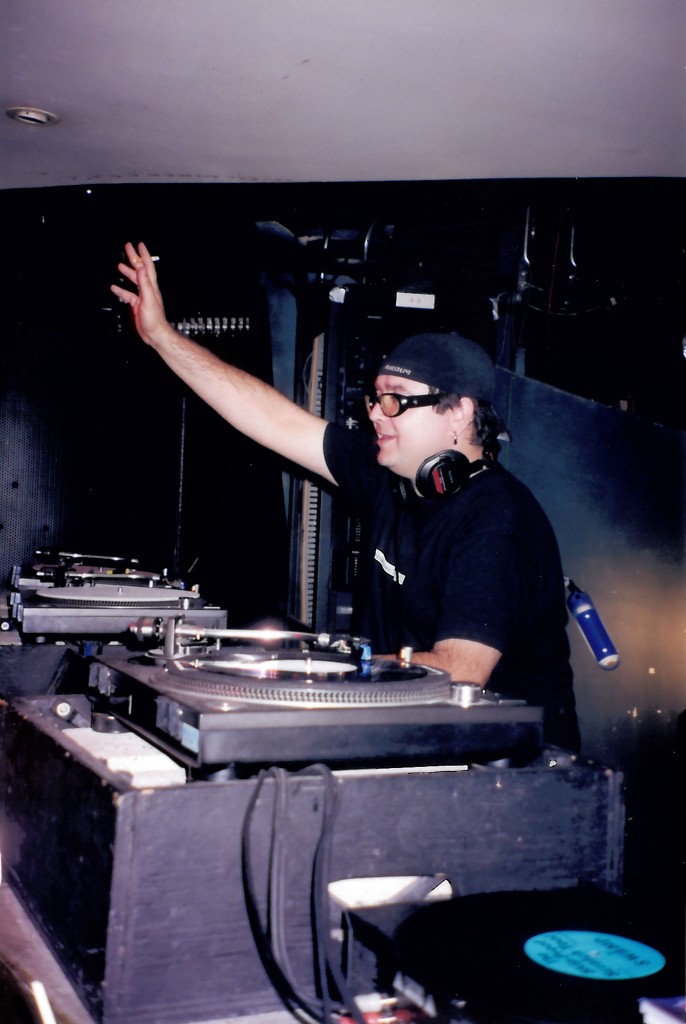
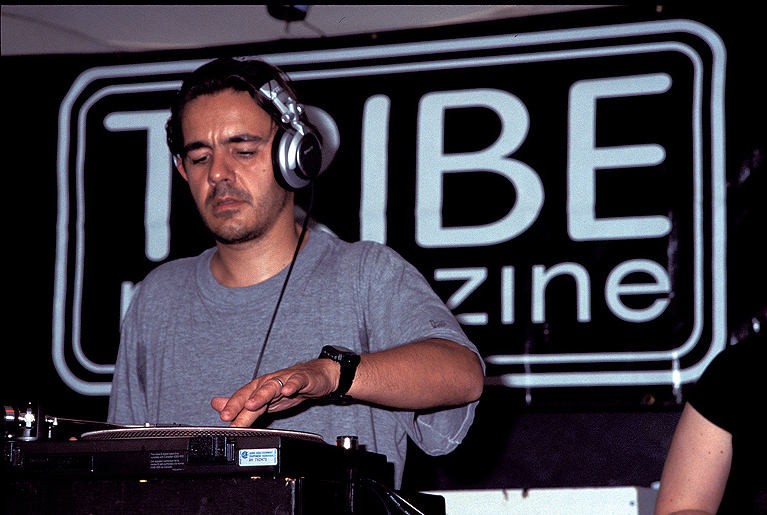
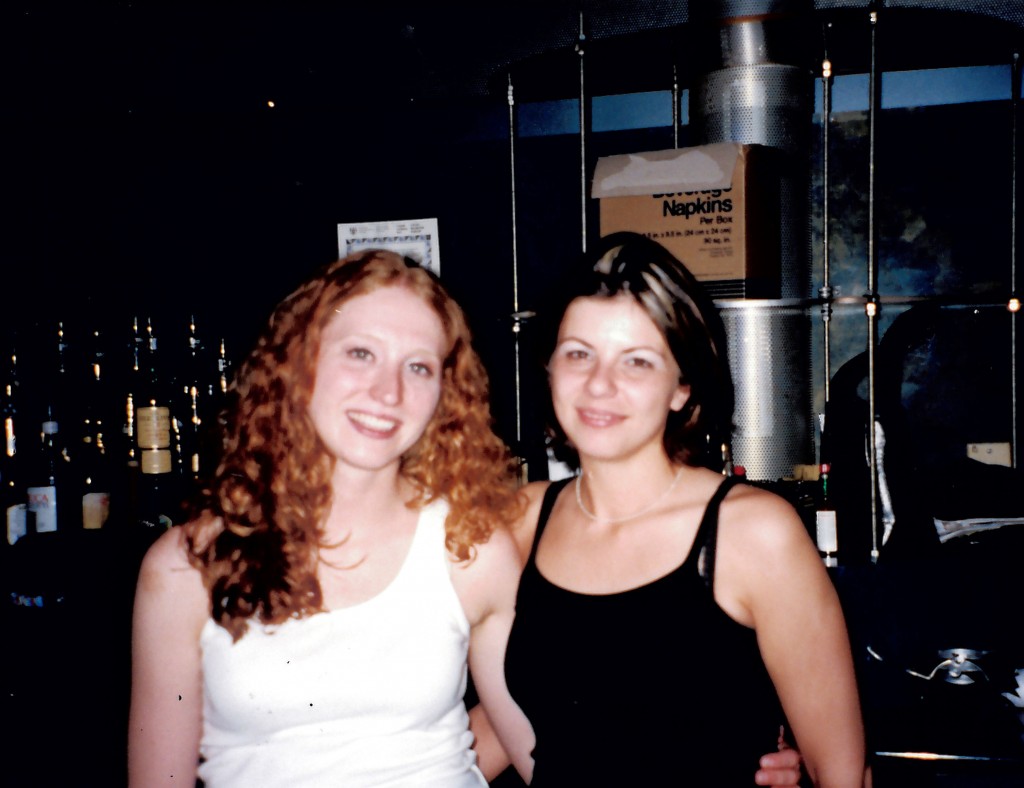
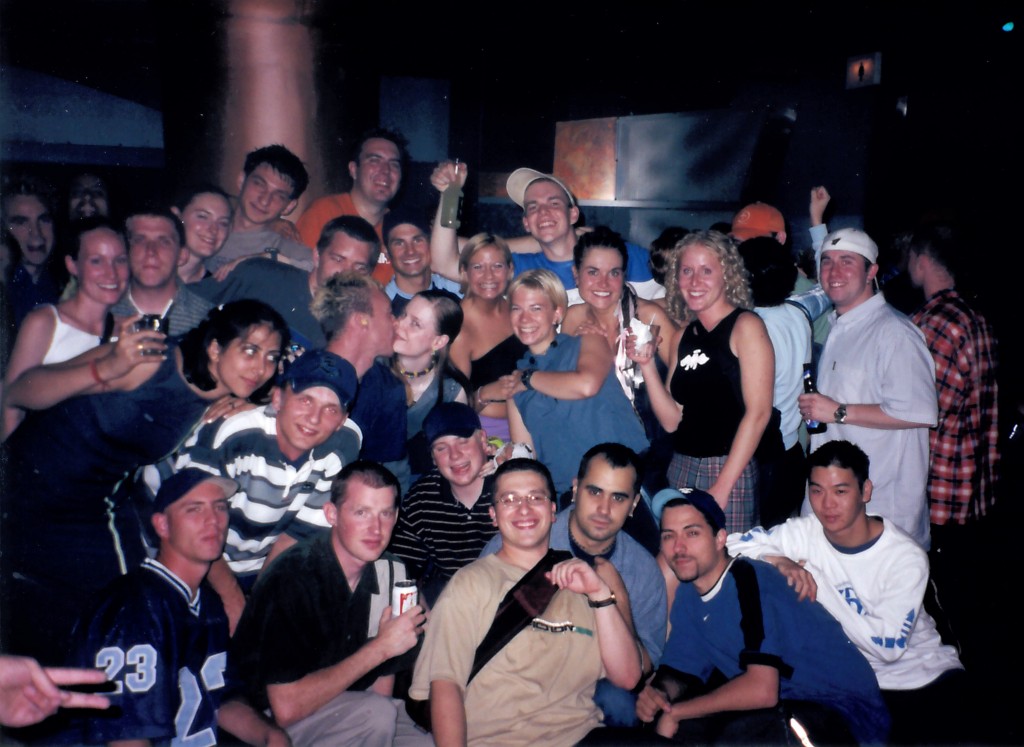
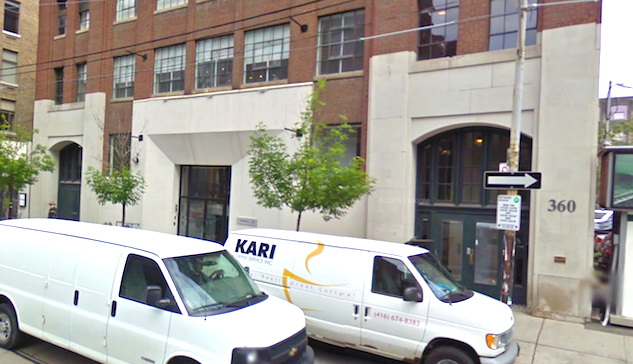
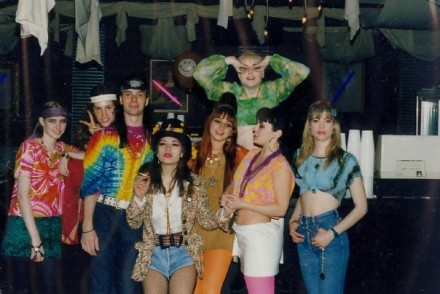
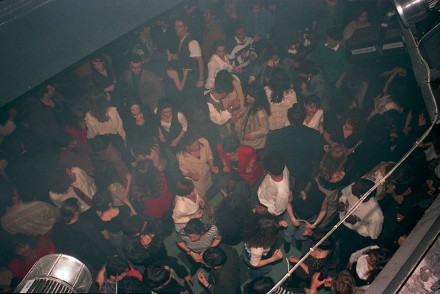
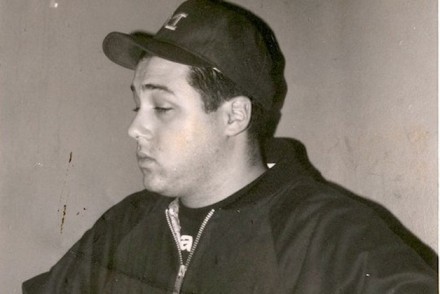

1 Comment
All comments in the string below have been republished from their original appearance on The Grid website. We’re including the readers’ comments as they add to these Then & Now stories. We look forward to reading new comments here as well.
Natalie Donohoe
I have to say being a kid growing up in this world of clubs taught me a lot. I was eight when I first walked through the doors of Club Z and then went on to see Stilife grow and then to work at Orchid and then to just see how the industry just blossomed into something I never expected to witness. Then came Denile and that was the height of what would be known as the club district. I made a lot of good friends and met a lot of interesting people but I will say it was the best time of my life. That V.I.P bar at jet and turbo was my baby.I would just like to say thank-you to all who I was able to service at that bar. We need a reunion….. 3:48 pm on January 6, 2013
Sean Watson
I’m proud to have been a bartender working at such clubs as Orchid and Jet. Great times! Reunion for sure Natalie! 2:03 pm on February 25, 2013
Jeremiah Holmes
You could always catch top talent at turbo of you like breaks house tech house and drum and bass you had it all night. I like it all and if I wanted to hear drum and bass I could just head down stairs and vice versa. Great crowds and people where musically knowledgeable and because of the hard work of the promoters is what made TURBO so sucssesful thanks Wayne, Steve, Rob, Arron, Marcus and Pat!!!! 2:47 pm on October 1, 2012
j-rock
Toronto was the #2 city in the world for Jungle/ D ‘n B after London, England. I fondly remember the era of the massive raves, and when everything started moving into the clubs as the crowds matured. Turbo, System Sound Bar, Industry, Roxy – not to mention Dose, Syrous, Better Days and Renegades. It was a great time to be young. 9:42 am on September 27, 2012
Mister E Man
Next story should be on Milano’s Sundays…the longest running Sunday night DnB party in NA…every big DnB star played there and it was really the go to club for DnB for many many years! 3:02 pm on September 25, 2012
j-rock
I used to LOVE Miano’s Sundays!  9:33 am on September 27, 2012
Tobias Visualbass
I have photos!!! lots and lots of photos! System Sound Bar next? 12:34 pm on September 25, 2012
Denise Benson
Hey Tobias, Thanks for the heads up about photos. Let’s link for future pieces. I wrote about System a while back though. The link to that story is above, in this piece, or head here, where you can find all 26 Then & Now pieces written so far: http://www.thegridto.com/tag/then-now/ 12:57 pm on September 25, 2012
Killah Emcee
man i miss this place and this time of dnb. 11:58 pm on September 24, 2012
SMILE
I was promoting for Lifeforce just before they transitioned from System to Turbo; and was in the scene since the days of the Hop when I was a teenager. This article brought back some good memories, thank you! 8:34 pm on September 24, 2012
dubcomm
Turbo helped cement my love for drum’n’bass music, and Toronto. Reading this article makes me want to go back in time! 8:28 pm on September 24, 2012
Dappa
Marcus and the Mystical Influence. Bar none 2 of the best DJ’s to ever rinse off serious sets! Miss those back in the days Jungle vibes. 4:25 pm on September 24, 2012
Robyn
This is amazingly beautiful! I started promoting for turbo in early 2000s with life force and syrous. Love and miss all of you do much, I hold a special place in my heart for all the love, fun, dancing and promoting I did! I’m an everyday junglist for life! Much luv! ~ninja in trainin 4:03 pm on September 24, 2012
Natalie Donohoe
We had a lot of fun, that’s for sure!!! 1:20 pm on January 8, 2013
Marcus Visionary
Amazing article Denise! Thanks so much for the chance to be a part of it. RIP Turbo. Nice to hear what everyone else is doing now! Definately miss having a club/residency/home like Turbo! Come back to Toronto Mystical!!  2:39 pm on September 24, 2012
Pat Mystical
One of these days Marcus, I promise. Great article Denise, the memories are flooding back now…forgot how much I missed that place and people. 3:55 pm on September 24, 2012